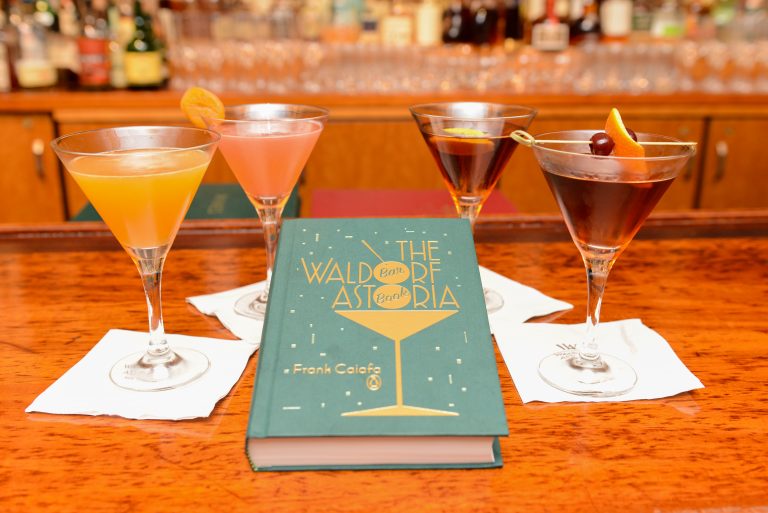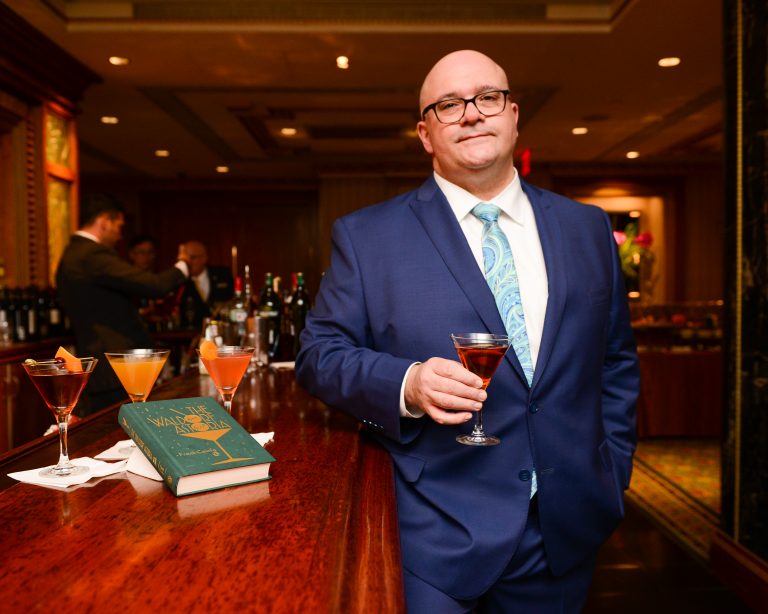A Trio of New Cocktail Books
The most satisfying thing about cocktails, besides, of course, drinking them, is that there’s always something new to learn and explore. This spring there are three new books that delve into all things cocktails. One takes on the daunting task of revising a treasured bible of sorts, one examines cocktails to match specific occasions (including hangovers) and the other takes on one of the great unsolved mysteries of drinks history. So pull up a coupe, get comfy and let's get reading!
Waldorf Astoria Bar Book by Frank Caiafa
One of the New York City’s greatest landmark hotels has been stirring up cocktails in its bars since 1893. The original Waldorf was located where the Empire State Building now stands, and The Old Waldorf-Astoria Cocktail Book, a comprehensive collection of its drink recipes published in 1934 has endured as a bartender and drinks enthusiast go-to for decades. The Waldorf moved to Park Avenue, and while the drinks served there have evolved over the years, the book, though useful as a time capsule, needed some updates. Peacock Alley Bar Manager Frank Caiafa undertook this herculean task, adding new drinks with spirits now part of the modern bartending repertoire such as cachaça, pisco and mezcal, and providing variations on original recipes. For instance, Caiafa takes a cocktail like the Bijou, lists its original recipe as it first appeared in the old book, then the updated Peacock Alley version with an addition of gin, and then goes
on to suggest the Savoy London variation of the same drink with sweet vermouth and chartreuse. Historical references for each recipe provide professional insight. It’s incredibly well organized, and even starts out with suggestions for setting up a home bar and a super handy Home Recipes section providing directions for homemade bitters and syrups. Then the massive list of recipes ensues in alphabetical order, with further sections for Large Cups and Punches and Hot Drinks. There’s also a list of Historical Concoctions for old timey recipes that deserve mention, but aren’t quite in the same league of drinks most people actually order nowadays, such as a collection of Pousse-Cafés, or egg drinks that don’t fall into either the flip or sour category, and blazers. The book even has the appearance of a valuable first edition classic art deco cocktail book, the kind most of us drink nerds covet for its cloth cover and embossed details, except this neo-classic is right at our fingertips instead of the rare book section.
The New Cocktail Hour: The Essential Guide to Hand-Crafted Cocktails by André Darlington and Tenaya Darlington
These sibling cocktail enthusiasts have compiled a big book of pretty drinks. The photography is downright mouth-watering and the text layout is also quite easy on the eyes. The cocktails are well organized by category and presented with historical reference, with easy to follow instructions and even food pairings. Cocktails fit certain moods or settings, such as Cocktails for a Cheese Board, tiki drinks, low proof, hair of the dog, etc., plus category breakdowns by season, or
by the drink's place in history. However, as good as it looks and as useful as most of the recipes and pairings may be, some of the cocktails deserve further research and detail. For instance, recipes such as the Old Fashioned can be made with a variety of spirits, and have so many variations and methods of preparing them, but only one definitive version here. Some cocktails are bestowed somewhat of an inattentive historical presentation. For instance, for the the Clover Club, they mention their recipe is based on that of the Clover Club bar in New York (they didn’t say Brooklyn, shame on them!, or even mention pioneering bar owner Julie Reiner, hello?), with dry vermouth. So are we to understand the original recipe was different than this one? Is it an optional ingredient? Explain! That said, it’s a useful book for someone who isn’t already a total cocktail nerd and needs an introduction to classics and modern staples, or some guidance in creating something original, Even for the seasoned enthusiast, we could all use some party planning assistance.
The Manhattan: The Story of the First Modern Cocktail, by Philip Greene, with foreword by Dale Degroff
Perhaps the most puzzling enigma of classic cocktail lore is the origin of the Manhattan. That supreme combination of whiskey, vermouth and bitters invented in the 19th century is a favorite cocktail that has endured through the ages (even during what are considered the dark ages of cocktails, it was still so popular that it was served in a dive bar without question to Linda Fiorentino’s character in the 1994 film The Last Seduction) and has appeared in hundreds of books and articles old and new. It takes up dozens of pages of google searches. However countless references always seem to begin by saying something to the effect of “No one knows for sure who invented it or where it originated, but…” Here, Philip Greene, co-founder of the Museum of the American Cocktail in New Orleans, attempts to solve the Manhattan mystery once and for all. This being the cocktail equivalent of a thriller, it would be rude to give away the plot, except to say the book is thoroughly researched and cross-checked with both original 19th century news clippings and other bits of evidence as
well as contemporary reporting to help get to the bottoms up of the drink. Following Degroff’s forward to set the stage, the book is divided into two sections. The first traces the cocktail caper and its aftermath, including some entertaining accounts of famous Manhattan benders, literary references and film appearances through the 20th century. The next section is an exhaustive compendium of recipes of the Manhattan’s variations, subdivided into the classic and contemporary. Many people regard this cocktail like a beloved family member, so to create a proper riff on it, it’s not a simple matter of swapping out base spirits and subbing vermouths and bitters, or even transposing it for another New York City borough or neighborhood, such as the Bronx, Brooklyn, Little Italy and Carroll Gardens. Even cocktails such as the Matador, inspired by an early 20th century fixation with all things Spain, was invented by British bartender William J. Tarling to invoke the spirit of the Manhattan from afar, pictured here with tequila, dry vermouth and orange curaçao (the drink's rediscovery is credited to historians Jared Brown and Anistatia Miller). Like the city itself, the Manhattan has seen its fair share of glory days, gritty lowpoints and gentrification in its lifetime. It’s fun to chart its development and so convenient to finally have all these recipes in one place. Plus, the stunning photos of the cocktails by Max Kelly make one wish the book came in scratch and slurp.






